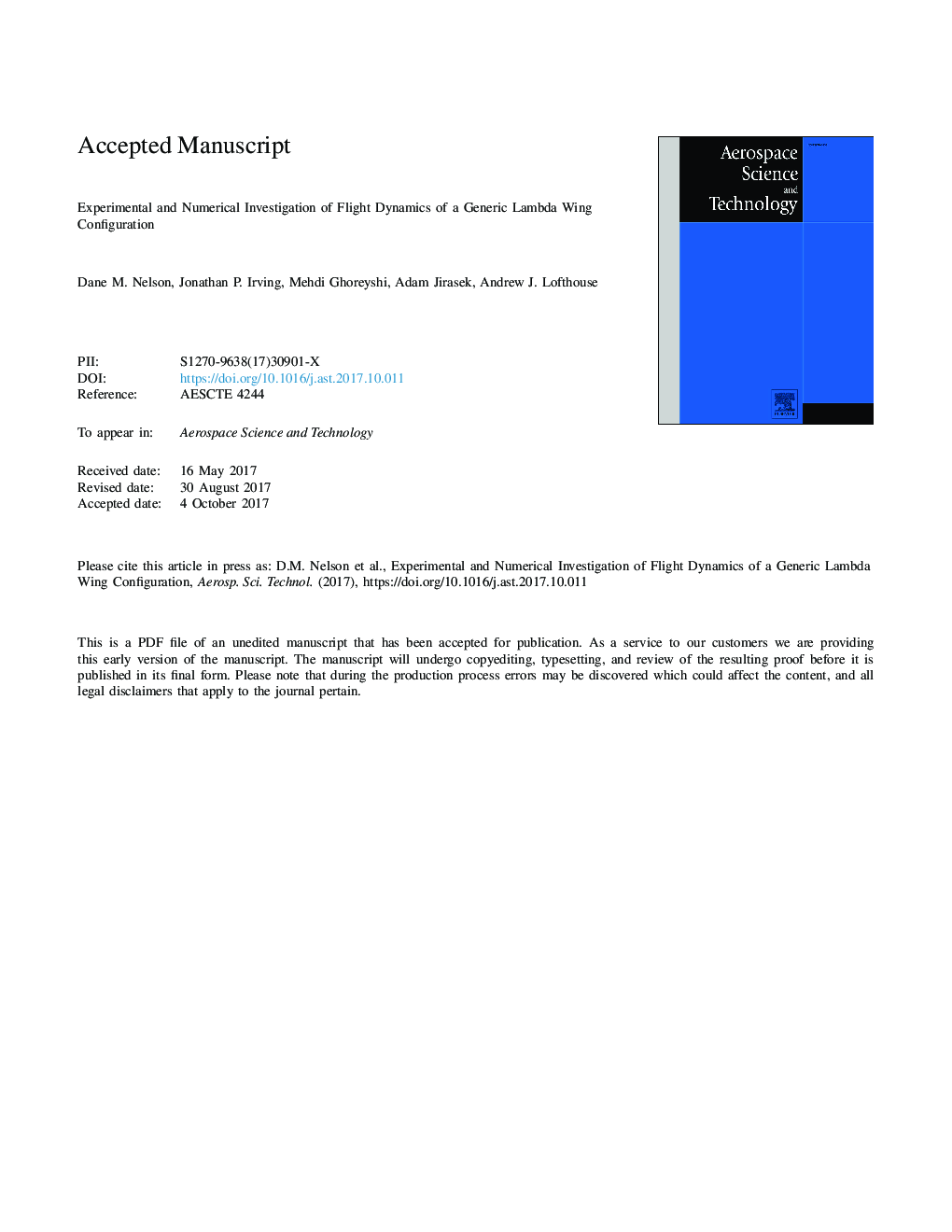| Article ID | Journal | Published Year | Pages | File Type |
|---|---|---|---|---|
| 8058423 | Aerospace Science and Technology | 2017 | 34 Pages |
Abstract
The development and comparison of aerodynamic simulation models for the inclusion in an open-loop stability & control model based on both experimental and numerical data are presented. Specifically, the work is focused on the effectiveness of the Kestrel simulation tools in replicating the aerodynamic coefficient data from wind tunnel experiments of a generic lambda wing configuration with four trailing edge control surfaces. Simulation conditions correspond to the angles of attack in range of â5â to 10â at assumed cruise Mach number of 0.7. These simulations include a clean configuration with no control surface deflection and when inboard/outboard control surfaces are deflected â10â, â5â, 5â, and 10â. Single and overset grids are used to simulate the control surface deflections. Predicted aerodynamic data are collected in form of look-up tables and are run in a Matlab/Simulink program to determine stability and control properties of the vehicle. The vehicle stability and control characteristics are then compared with the results of running experimental coefficient values through the same program. The results show that numerical predictions of the test case considered depend heavily on the geometry details and numerical setup, e.g. turbulence modeling, grid refinement, integration scheme, time step, etc. and therefore do not match experimental data at all tested conditions. In addition, the stability and control investigation of the vehicle using these data confirms that the differences between simulations and measurements could lead to significant changes in the evaluation of vehicle's stability and control characteristics. The simulation predictions of this work, therefore, cannot fully replace the need for experiments to determine the vehicle's stability and control, however they help to provide insight into flow physics and to direct/make best use of wind tunnel experiments.
Keywords
Related Topics
Physical Sciences and Engineering
Engineering
Aerospace Engineering
Authors
Dane M. Nelson, Jonathan P. Irving, Mehdi Ghoreyshi, Adam Jirasek, Andrew J. Lofthouse,
